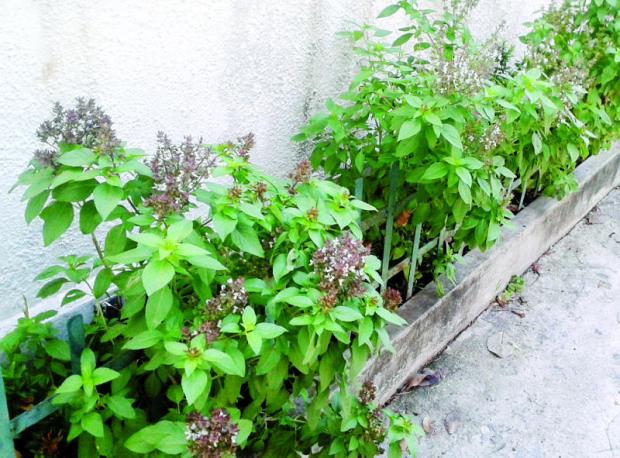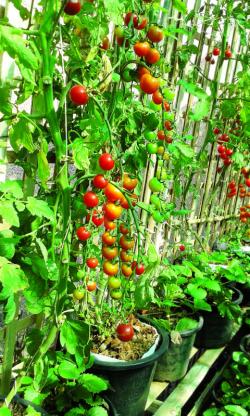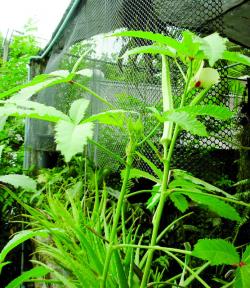When my now adult children were in primary school, bananas were so cheap that we fed kluay namwa to our pet birds. My late father, who was visiting from the Philippines, made it his duty to feed the birds while my husband and I were at work and the children were in school.
One day my father was surprised when he saw me eat the banana, too. He thought kluay namwa, which was not available in the Philippines, was only for birds and not fit for human consumption. I explained that it was in fact so nutritious and digestible that Thais fed it to babies just beginning to eat solid food. It was only then that he dared taste it and found it delicious.
However, I could not persuade my husband to plant bananas. "They are plentiful and very cheap," he said. "If you want to eat bananas, just buy them from the market." At the time, kluay namwa was 1.50 to two baht a hand, and kluay hom was five baht at the most. Of course salaries were also very low then.
I never dreamed I would see the day when kluay namwa would cost 50-70 baht a hand, and kluay hom 100 to 120 baht, even at Klong Toey market, which is known for cheap farm produce. At these prices, feeding bananas to birds is no chicken feed and babies of minimum wage earners will have to do without kluay namwa. Now when I complain about the exorbitant prices my husband says it's time we planted bananas.
A one-square-metre plot in the corner of the yard is all it takes for a banana plant to grow. Just make sure that it is in full sun and the soil has a good degree of natural fertility and good drainage. This can be achieved by digging a hole about half a metre wide and half a metre deep and putting compost or leaf mould in it to provide fertility for the soil as they decompose. In 10 to 12 months, the plant reaches maturity, during which it begins to flower, bears fruit then dies, to be replaced by suckers which grow around the mother plant and develop at different stages, making it possible to obtain a continuous crop rhythm.
Why the size and depth of the hole, you might ask. Bananas, through their suckers, are perennials and the hole is meant to support and provide nourishment for the next plant generations, as well. In order to obtain large fruit, however, suckers around the mother plant should be reduced to only two at a time, and nutrients are replenished by digging in compost or complete fertiliser (NPK 15-15-15 or equivalent) around the plant. After the fourth generation, or about five years, the suckers must be replanted as the soil will have been spent by then.
The ever-rising costs of fruit and vegetables is not the only reason why we should begin planting our own food. Home-grown vegetables are sweeter and contain more vitamins and minerals as they are freshly picked. What's more, it is more convenient to prepare daily meals if herbs and vegetables are readily available from the garden. But most important of all is that you know the food you serve your family is pesticide-free.
You don't have a big yard? Or your yard is all but concrete? No worries, with the right containers and growing media, you can grow vegetables in whatever available space that you have. You can even plant in the narrow strip of soil between your fence and the street, or under trees. Just make sure that your plants get at least six hours of sunlight daily. It does not matter whether it is morning or afternoon sun, or a combination of both.
Herbs commonly used as ingredients in Thai cooking, such as holy basil, sweet basil, lemongrass, galangal, ginger, parsley, green onion and kaffir lime can all be grown in containers. Eggplant, tomato, chilli, okra, swamp cabbage or pak boong, lettuce, the Chinese cabbage kwang toong and the Chinese kale phak kana, bitter gourd and cucumber (the latter two will need stakes), strawberry, calamondin and mulberry are but some of the vegetables and fruits that can be grown in containers.
One of the keys to successful container gardening is the planting medium. It must be porous and well drained. The ideal growing medium is a mixture of one part loamy soil, one part compost and/or leaf mould, and one part rice hull or finely chopped coconut husk. Place the containers on elevated stands to facilitate drainage and prevent the plant from absorbing too much heat from the concrete flooring.
Seeds may be purchased from gardening supply shops near your place or at Chatuchak. There are two methods of sowing seeds. One is direct planting, whereby the seeds are planted in the containers in which they grow until they are harvested. Then there are seeds which are sown in a seedling box and then transplanted to their individual pots. Check the seed packet for planting instructions.
When direct planting, sow three seeds per container and weed out two, leaving only the biggest and healthiest seedling. Without competition for soil nutrients and sunlight, this seedling will grow even stronger and healthier. If not thinned, the seedlings will grow spindly and weak, and will not develop into healthy plants.
Do not expose your transplanted seedlings to direct sun for a day or two to prevent their leaves from being burned. Place them in a sheltered area with filtered sunlight and gradually expose them to the sun when the seedlings look green and the leaves are stiff.
Water your plants once a day, preferably in the morning before the sun gets hot. Fertilise by topdressing the container with well decomposed manure or compost every two weeks. Alternatively, use your rice washings to water your plants.
Email nthongtham@gmail.com.

HOME IS WHERE THE HERBS ARE: Sweet basil thrives in a narrow strip of soil on the street. Photos: Normita Thongtham




VEGGIE TALES: Tomato, okra, eggplant and strawberry can all be grown in containers. Choosing the right container is key.

